
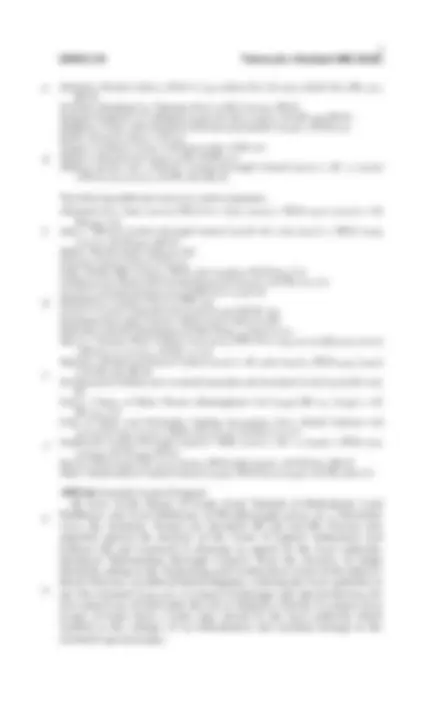
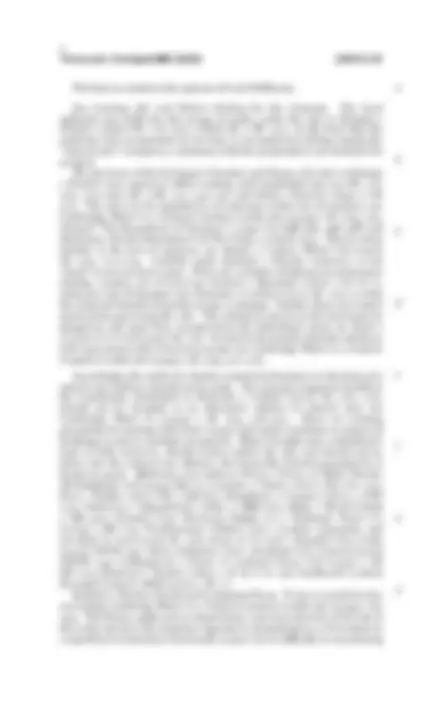
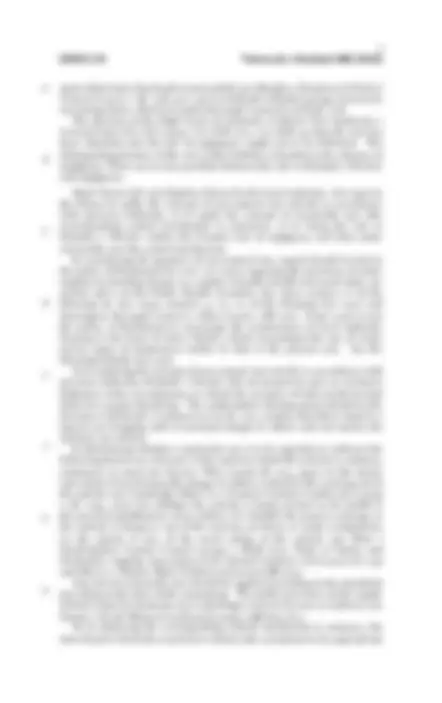

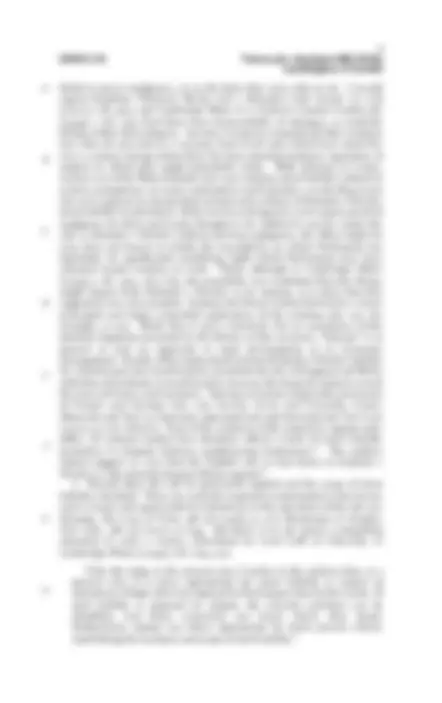
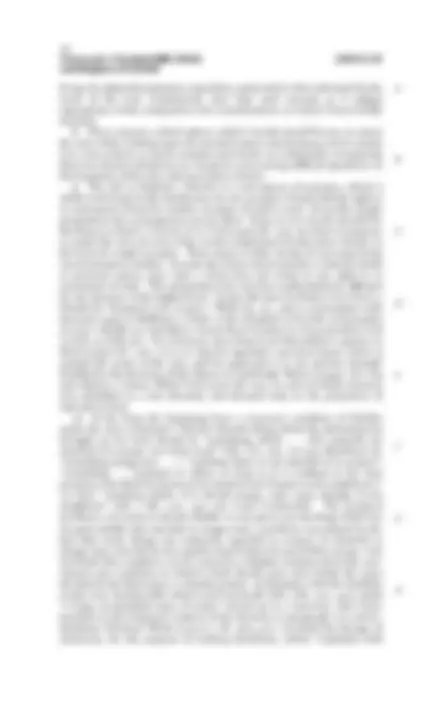
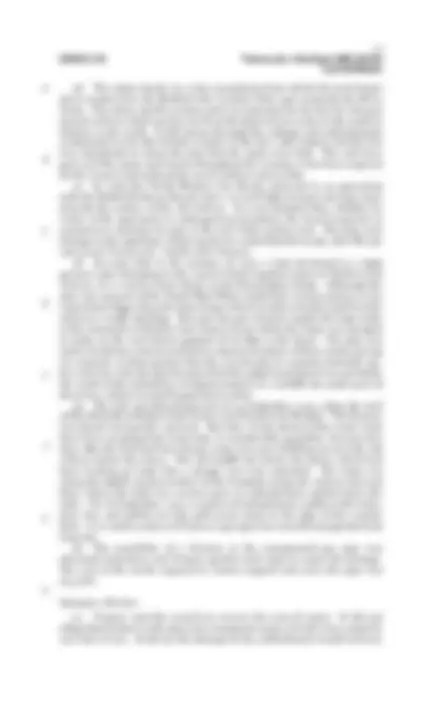

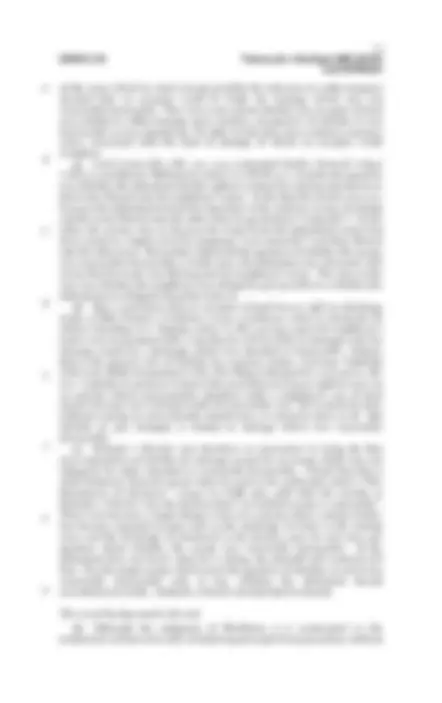

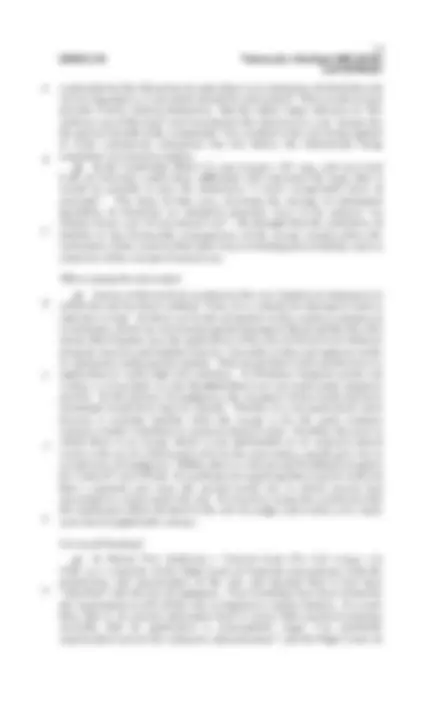
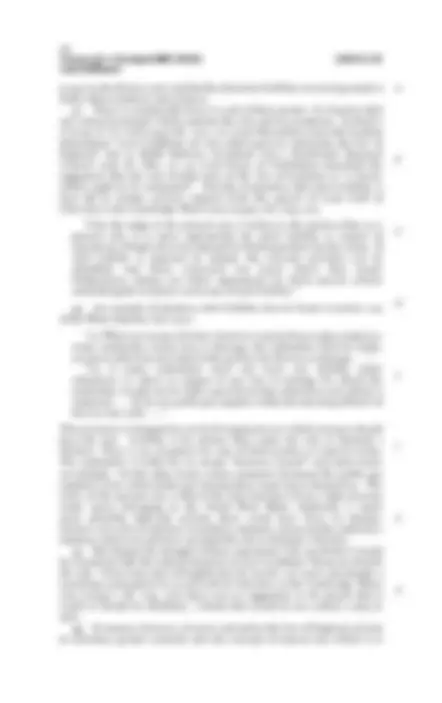
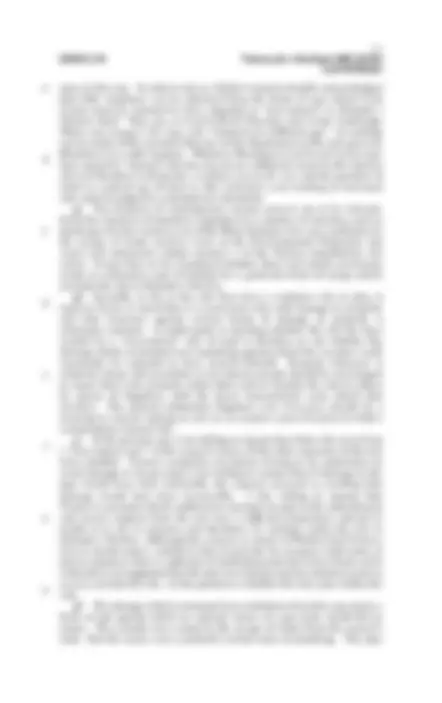
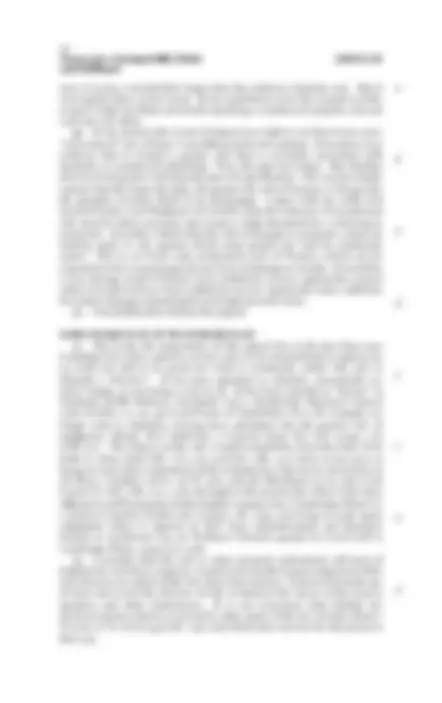
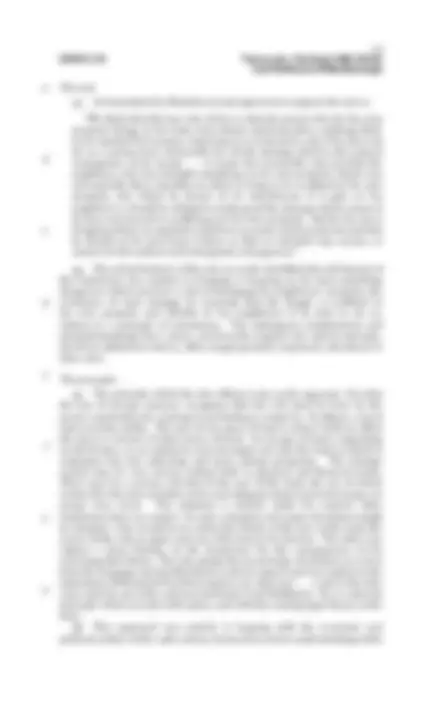

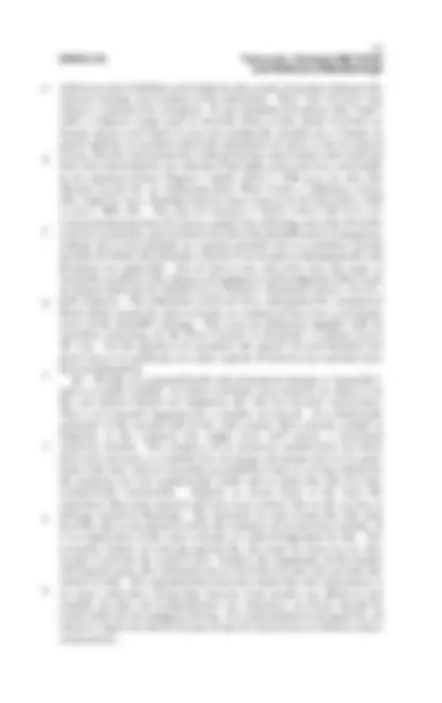

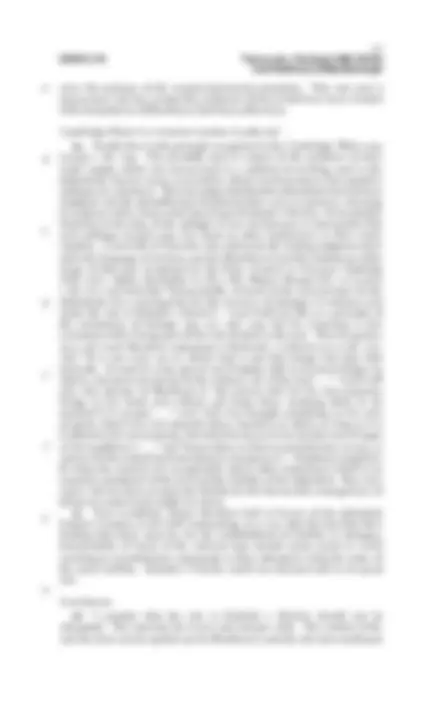
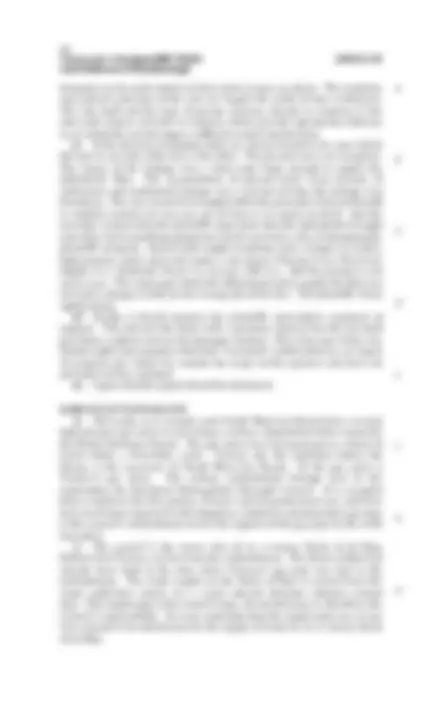
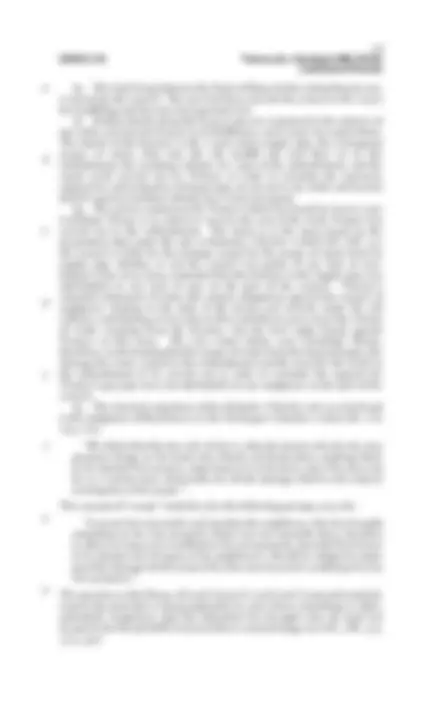
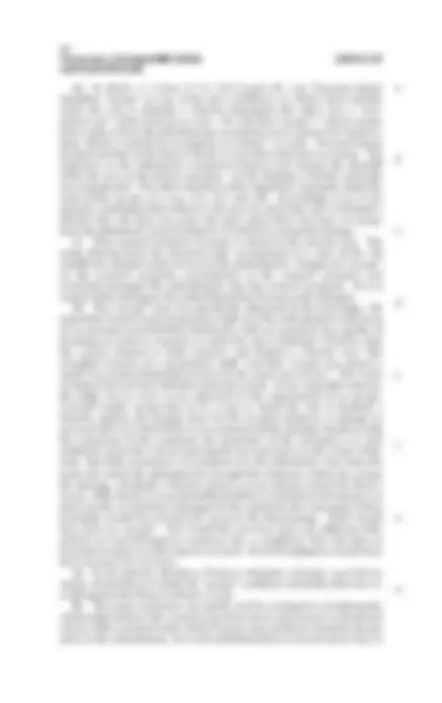
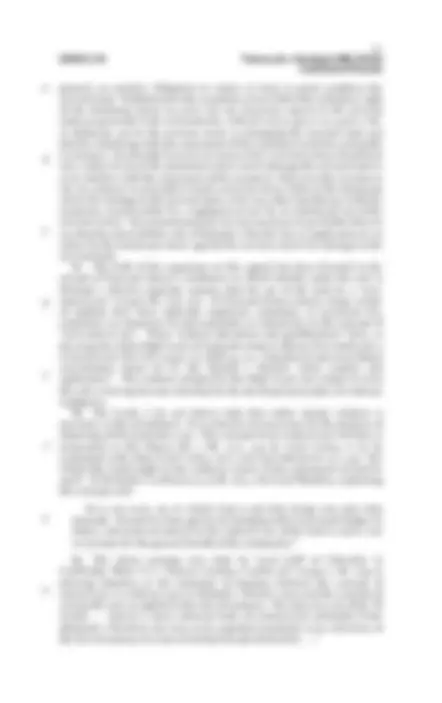

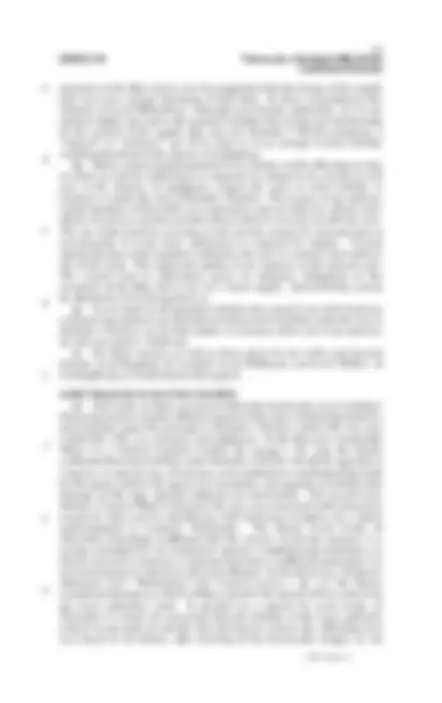
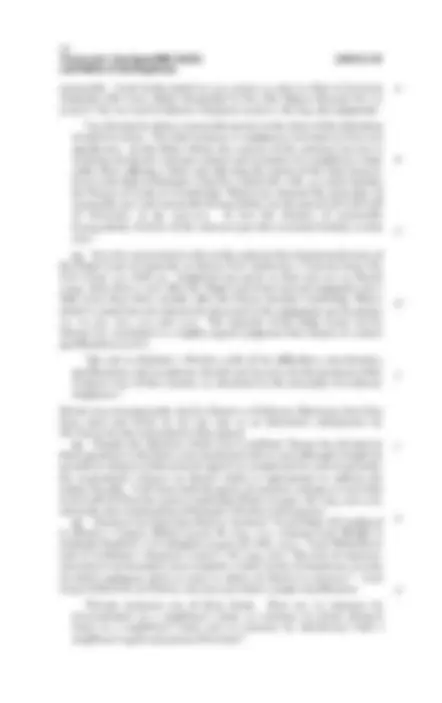

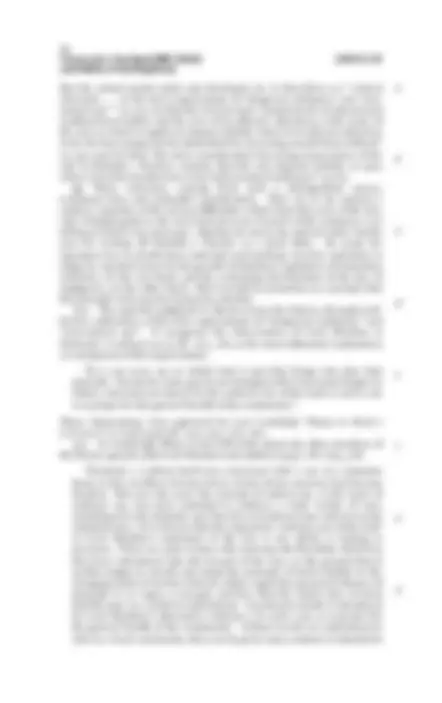
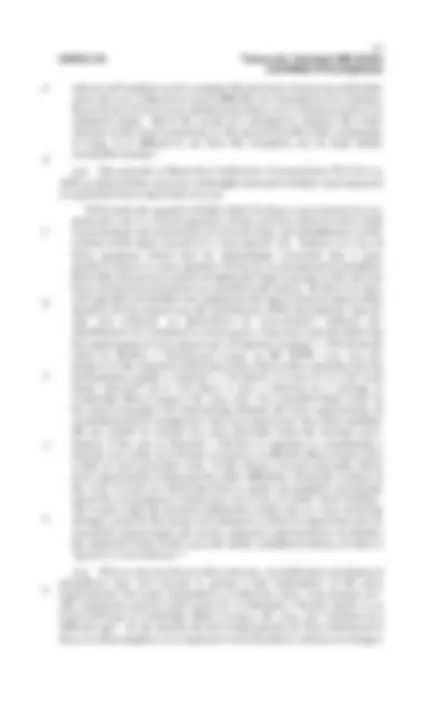


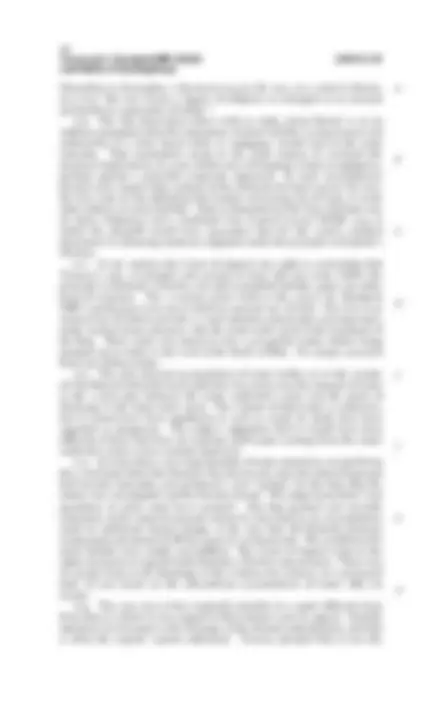
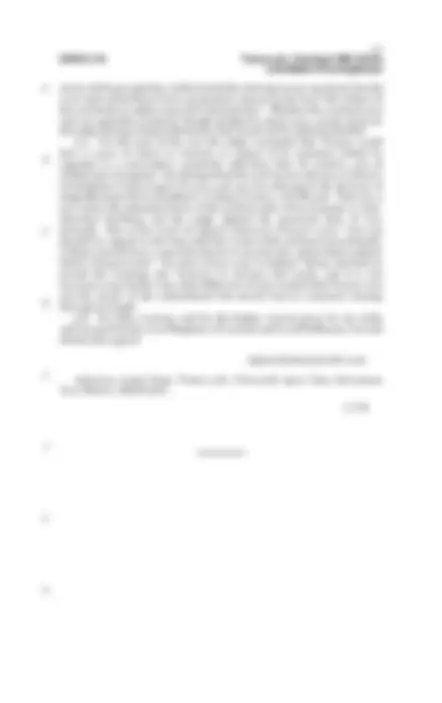


Study with the several resources on Docsity

Earn points by helping other students or get them with a premium plan


Prepare for your exams
Study with the several resources on Docsity

Earn points to download
Earn points by helping other students or get them with a premium plan
Community
Ask the community for help and clear up your study doubts
Discover the best universities in your country according to Docsity users
Free resources
Download our free guides on studying techniques, anxiety management strategies, and thesis advice from Docsity tutors
В данном документе рассматривается теоретическая база и практические применения искусственного интеллекта в медицине. Автор обсуждает различные подходы к созданию медицинских систем с искусственным интеллектом, их преимущества и ограничения. Кроме того, рассматриваются реальные примеры использования искусственного интеллекта в медицине, такие как диагностика болезней, планирование лечения и мониторинг пациентов. Документ может служить полезным для студентов, изучающих медицинскую информатику и искусственный интеллект.
What you will learn
Typology: Study notes
1 / 41

This page cannot be seen from the preview
Don't miss anything!


































House of Lords
2003 March 31 ; Lord Bingham of Cornhill, Lord Homann, April 1 , 2 ; Lord Hobhouse of Woodborough, Lord Scott of Foscote Nov 19 and Lord Walker of Gestingthorpe
Rylands v Fletcher Ñ Provision of piped water supply Ñ Fractured pipe Ñ Damage caused by escape of water from pipe constructed to serve block of ßats Ñ Whether extraordinary use of land resulting in strict liability
In 1966 the claimant was granted a right to install a gas main along a stretch of disused railway line which included an embankment at Brinnington in Stockport. On a nearby site owned by the defendant local authority lay a tower block of ßats which was supplied with water by means of a water pipe which the authority had constructed between the tower block and the water main. In 1972 part of the disused line, including the embankment, was purchased by the authority, with the claimant continuing to have an easement of support in respect of its gas main. In 1992 , without any negligence on the part of the authority, the water pipe leading to the block of ßats fractured. As a result large quantities of water escaped underground and caused the collapse of the embankment, leaving the gas main exposed and unsupported. The claimant, having been compelled to carry out emergency repair work to its gas main, brought an action in the High Court to recover the cost of the remedial work on the ground, inter alia, that the authority was strictly liable for non- natural user of land under the rule in Rylands v Fletcher. The judge found for the claimant on that ground but, on appeal by the local authority, his decision was reversed by the Court of Appeal. On appeal by the claimantÑ Held, dismissing the appeal, that the rule in Rylands v Fletcher required that an occupier of land, acting other than under statutory authority, had brought on to his land or was keeping there some dangerous thing which posed an exceptionally high risk to neighbouring property should it escape and which amounted to an extraordinary and unusual use of the land, that there had been an escape on to some other property otherwise than by Act of God or the intervention of a third party and that the damage claimed for had been to that other property and was a forseeable consequence of the escape; that the provision of a water supply to a block of ßats by means of a connecting pipe from the water main, though capable of causing damage in the event of an escape, did not amount to the creation of a special hazard constituting an extraordinary use of land; that further ( per Lord Scott of Foscote), since the damage to the claimantÕs gas main occurred on the local authorityÕs own land there had been no escape for the purposes of the rule; and that accordingly, irrespective of whether the claimantÕs easement of support was a su±cient proprietary interest to enable it to recover damages under Rylands v Fletcher, the facts upon which the claimant relied fell outside the ambit of rule ( post, paras 9 Ð 13 , 30 Ð 34 , 43 Ð 44 , 47 Ð 49 , 52 Ð 54 , 58 Ð 59 , 64 Ð 67 , 75 , 77 Ð 79 , 82 , 84 , 85 , 87 , 90 Ð 91 , 103 , 106 , 111 Ð 113 , 116 ). Cambridge Water Co v Eastern Counties Leather plc [ 1994 ] 2 AC 264 , HL(E) followed. Rylands v Fletcher ( 1868 ) LR 3 HL 330 , HL(E) considered. Decision of the Court of Appeal [ 2001 ] EWCA Civ 212 a±rmed.
The following cases are referred to in their LordshipsÕ opinions: Allen v Gulf Oil ReÞning Ltd [ 1981 ] AC 1001 ; [ 1981 ] 2 WLR 188 ; [ 1981 ] 1 All ER 353 , HL(E)
A B C D E F G H
[2004] 2 AC[2004] 2 AC Transco plc v Stockport MBC (HL(E))Transco plc v Stockport MBC (HL(E))
2 AC 2004 Ñ 1
Anderson v Oppenheimer ( 1880 ) 5 QBD 602 , CA Andreae v Selfridge & Co Ltd [ 1938 ] Ch 1 ; [ 1937 ] 3 All ER 255 , CA Attorney General v Cory Bros & Co Ltd[ 1921 ] 1 AC 521 , HL(E) Autex Industries Ltd v Auckland City Council [ 2000 ] NZAR 324 Baird v Williamson ( 1863 ) 15 CB NS 376 Bamford v Turnley ( 1862 ) 3 B & S 62 Blue Circle Industries plc v Ministry of Defence [ 1999 ] Ch 289 ; [ 1999 ] 2 WLR 295 ; [ 1998 ] 3 All ER 385 , CA Bond v Nottingham Corpn [ 1940 ] Ch 429 ; [ 1940 ] 2 All ER 12 , CA Bradburn v Lindsay [ 1983 ] 2 All ER 408 Burnie Port Authority v General Jones Pty Ltd ( 1994 ) 179 CLR 520 ; 120 ALR 42 Cambridge Water Co v Eastern Counties Leather plc [ 1994 ] 2 AC 264 ; [ 1994 ] 2 WLR 53 ; [ 1994 ] 1 All ER 53 , HL(E) Carstairs v Taylor ( 1871 ) LR 6 Ex 217 Charing Cross Electricity Supply Co v Hydraulic Power Co [ 1914 ] 3 KB 772 , CA Dale v Hall ( 1750 ) 1 Wils 281 Delaware Mansions Ltd v Westminster City Council [ 2001 ] UKHL 55 ; [ 2002 ] 1 AC 321 ; [ 2001 ] 3 WLR 1007 ; [ 2001 ] 4 All ER 737 , HL(E) Donoghue v Stevenson [ 1932 ] AC 562 , HL(Sc) Dunne v North Western Gas Board [ 1964 ] 2 QB 806 ; [ 1964 ] 2 WLR 164 ; [ 1963 ] 3 All ER 916 , CA Environment Agency ( formerly National Rivers Authority) v Empress Car Co (Abertillery) Ltd [ 1999 ] 2 AC 22 ; [ 1998 ] 2 WLR 350 ; [ 1998 ] 1 All ER 481 , HL(E) Geddis v Proprietors of Bann Reservoir ( 1878 ) 3 App Cas 430 , HL(I) Goldman v Hargrave [ 1967 ] 1 AC 645 ; [ 1966 ] 3 WLR 513 ; [ 1966 ] 2 All ER 989 , PC Great Western Railway Co v Mostyn (Owners) [ 1928 ] AC 57 , HL(E) Green v Chelsea Waterworks Co ( 1894 ) 70 LT 547 , CA Hale v Jennings Bros [ 1938 ] 1 All ER 579 , CA Hammersmith and City Railway Co v Brand ( 1869 ) LR 4 HL 171 , HL(E) Holbeck Hall Hotel Ltd v Scarborough Borough Council [ 2000 ] QB 836 ; [ 2000 ] 2 WLR 1396 ; [ 2000 ] 2 All ER 705 , CA Hunter v Canary Wharf Ltd [ 1997 ] AC 655 ; [ 1997 ] 2 WLR 684 ; [ 1997 ] 2 All ER 426 , HL(E) Job Edwards Ltd v Birmingham Navigations Co Proprietors [ 1924 ] 1 KB 341 , CA Leakey v National Trust for Places of Historic Interest or Natural Beauty [ 1980 ] QB 485 ; [ 1980 ] 2 WLR 65 ; [ 1980 ] 1 All ER 17 , CA Longhurst v Metropolitan Water Board [ 1948 ] 2 All ER 834 , HL(E) Merlin v British Nuclear Fuels plc [ 1990 ] 2 QB 557 ; [ 1990 ] 3 WLR 383 ; [ 1990 ] 3 All ER 711 Miles v Forest Rock Granite Co (Leicestershire) Ltd ( 1918 ) 34 TLR 500 , CA Musgrove v Pandelis [ 1919 ] 2 KB 43 , CA Nichols v Marsland ( 1876 ) 2 Ex D 1 , CA Nugent v Smith ( 1876 ) 1 CPD 423 , CA Overseas Tankship (UK) Ltd v Miller Steamship Co Pty (The Wagon Mound (No 2 )) [ 1967 ] 1 AC 617 ; [ 1966 ] 3 WLR 498 ; [ 1966 ] 2 All ER 709 , PC Perry v Kendricks Transport Ltd [ 1956 ] 1 WLR 85 ; [ 1956 ] 1 All ER 154 , CA RHM Bakeries (Scotland) Ltd v Strathclyde Regional Council 1985 SC (HL) 17 ; 1985 SLT 214 , HL(Sc) Rainham Chemical Works Ltd v Belvedere Fish Guano Co Ltd [ 1921 ] 2 AC 465 , HL(E) Rapier v London Tramways Co [ 1893 ] 2 Ch 588 Read v J Lyons & Co Ltd [ 1947 ] AC 156 ; [ 1946 ] 2 All ER 471 , HL(E) Rickards v Lothian [ 1913 ] AC 263 , PC River Wear Comrs v Adamson ( 1877 ) LR 2 App Cas 743 , HL(E) Ross v Fedden ( 1872 ) LR 7 QB 661 ; 26 LT 966
A B C D E F G H
Transco plc v Stockport MBC (HL(E))Transco plc v Stockport MBC (HL(E)) [2004] 2 AC[2004] 2 AC
The facts are stated in the opinion of Lord Homann.
Ian Leeming QC and Robert Sterling for the claimant. The local authority was liable for the escape of water, under the rule in Rylands v Fletcher ( 1866 ) LR 1 Ex 265 ; ( 1868 ) LR 3 HL 330 , on the basis that the authority had accumulated on its land, in circumstances falling outside the ÔÔnatural userÕÕ exception, a substance with the propensity to do mischief if it escaped. The decisions of the Exchequer Chamber and House of Lords in Rylands v Fletcher were meant to reßect existing, well established law: see LR 1 Ex 265 , 279 Ð 280 ; LR 3 HL 330 , 341 Ð 342 and Smith v Kenrick ( 1849 ) 7 CB
Accordingly, the ambit of a further control mechanism is in the form of a natural user defence should not be wide. The concept of general beneÞt to the community, postulated in Rickards v Lothian [ 1913 ] AC 263 , 279 , should not be accepted as an alternative defence to natural user: see Cambridge Water Co [ 1994 ] 2 AC 264 , 308 Ð 309. There are existing precedents for dealing with water escape and similar problems in respect of buildings in joint or multiple occupation. Water brought onto a defendantÕs land in bulk, however, should remain within the rule and should not be taken into the natural user defence, the forseeable hazard presented by it being too great. [Reference was made to Peters v Prince of Wales Theatre (Birmingham) Ltd [ 1943 ] KB 73 ; Carstairs v Taylor ( 1871 ) LR 6 Ex 217 ; Ross v Fedden ( 1872 ) LR 7 QB 661 ; Humphries v Cousins ( 1877 ) 2 CPD 239 ; Anderson v Oppenheimer ( 1880 ) 5 QBD 602 ; Blake v Woolf [ 1898 ] 2 QB 426 ; Charing Cross Electricity Supply Co v Hydraulic Power Co [ 1914 ] 3 KB 772 ; Northwestern Utilities Ltd v London Guarantee and Accident Co Ltd [ 1936 ] AC 108 ; Irvine & Co Ltd v Dunedin City Corpn [ 1939 ] NZLR 741 ; Autex Industries Ltd v Auckland City Council [ 2000 ] NZAR 324 ; Collingwood v Home & Colonial Stores Ltd [ 1936 ] 3 All ER 200 ; Bamford v Turnley ( 1862 ) 3 B & S 62 and Southwark London Borough Council v Mills [ 2001 ] 1 AC 1 .] Rylands v Fletcher should not be departed from. To do so would involve overruling Cambridge Water Co v Eastern Counties Leather plc[ 1994 ] 2 AC
A B C D E F G H
Transco plc v Stockport MBC (HL(E))Transco plc v Stockport MBC (HL(E)) [2004] 2 AC[2004] 2 AC
upon what basis of principle it proceeded: see Murphy v Brentwood District Council [ 1991 ] 1 AC 398 , 471 , per Lord Keith of Kinkel giving reasons for overruling Anns v Merton London Borough Council [ 1978 ] AC 728. The decision of the High Court of Australia in Burnie Port Authority v General Jones Pty Ltd ( 1994 ) 179 CLR 520 ; 120 ALR 42 that the rule has been absorbed into the law of negligence ought not to be followed. The distinguishing feature of the rule is that liability is founded in the absence of negligence There are no true parallels between the rule in Rylands v Fletcher and negligence. Mark Turner QC and Stephen Davies for the local authority. It is open to the House to apply the concept of non-natural user strictly in accordance with previous authority, or to apply the concept of reasonable user (the corresponding control mechanism in nuisance), or to bring the rule in Rylands v Fletcher within the broader tort of negligence and thus make reasonable care the control mechanism. In considering the question of non-natural use, regard should be had to the policy of Parliament for over 100 years requiring the provision of water supplies to dwelling houses as a matter of public health and social duty: see section 48 ( 1 ) of the Public Health (London) Act 1891 ; section 17 of the Housing etc Act 1909 ; sections 9 , 10 , 25 of the Housing Act 1936 and Kensington Borough Council v Allen [ 1926 ] 1 KB 576. From 1956 it was the policy of Parliament to encourage the construction of local authority housing in the form of tower blocks, which necessitated the use of water service pipes of dimensions similar to that in the present case. See the Housing Subsidy Act 1956. As to applying the concept of non-natural user strictly in accordance with previous authority, Rylands v Fletcher did not purport to give an exclusive deÞnition of the circumstances in which the occupier of land would be held liable for escapes therefrom. The authoritative starting point should be the decision in Rickards v Lothian [ 1913 ] AC 263 , namely, that there must be a special use bringing with it increased danger to others and not merely the ordinary use of land. In determining whether a particular use is to be regarded as ordinary the following factors are relevant: (i) the extent to which the activity is common, customary or usual (see Stovin v Wise [ 1996 ] AC 923 , 949 ); (ii) the nature and extent of any foreseeable danger to others created by the carrying out of the activity (see Cambridge Water Co v Eastern Counties Leather plc [ 1994 ] 2 AC 264 , 309 ); (iii) whether the activity is being carried on for proÞt or the personal gratiÞcation of its author; (iv) whether the person carrying on the activity is doing so out of the exercise of choice or under compulsion; (v) the extent, if any, of the social utility of the activity (see Watt v Hertfordshire County Council [ 1954 ] 1 WLR 835 ; Pride of Derby and Derbyshire Angling Association Ltd v British Celanese Ltd [ 1953 ] Ch 149 and Marcic v Thames Water Utilities Ltd [ 2002 ] QB 929 ). Any test of reasonable user should be applied according to the standards prevailing at the time of the assessment. The public provision of the supply of fresh water for domestic use in dwellings is now to be seen as ordinary: see Dunne v North Western Gas Board [ 1964 ] 2 QB 806 , 832. As to deploying the corresponding control mechanism in nuisance, the main factors which the courts have historically considered to be appropriate
A B C D E F G H
[2004] 2 AC[2004] 2 AC Transco plc v Stockport MBC (HL(E))Transco plc v Stockport MBC (HL(E))
in the area was such that the large quantity of water which had escaped from the pipe ßowed some distance from the block and percolated into an embankment which supported the appellant TranscoÕs 16 -inch high- pressure gas main, causing the embankment to collapse and leaving this gas main exposed and unsupported. There was an immediate and serious risk that the gas main might crack, with potentially devastating consequences. Transco took prompt and eective remedial measures and now seeks to recover from the council the agreed cost of taking them.
Rylands v Fletcher 3 Few cases in the law of tort or perhaps any other Þeld are more familiar, or have attracted more academic and judicial discussion, than Rylands v Fletcher. This relieves me of the need both to summarise the well- known facts of the case and to rehearse yet again the passages cited by Lord Homann in which Blackburn J, LR 1 Ex 265 , 279 and Lord Cairns LC, LR 3 HL 330 , 338 Ð 339 expressed the ratio of their decisions. I content myself with three points, none of them controversial: ( 1 ) The plaintiframed his claim as one of negligence: see LR 1 Ex 265. It was only when a majority of the Court of Exchequer (Pollock CB and Martin B, Bramwell B dissenting ( 1865 ) 3 H & C 774 held against him, ruling that no claim would lie in the absence of negligence, that the plaintichanged tack and contended that defendants were liable even if negligence could not be established against them. ( 2 ) Blackburn J did not conceive himself to be laying down any new principle of law. When, in Ross v Fedden ( 1872 ) 26 LT 966 , 968 , it was later suggested to him by counsel that the question in Rylands v Fletcher had never been decided until the adjudication of that case, he rejected the suggestion in robust terms. The Lord Chancellor regarded the principles on which the case was to be determined as ÔÔextremely simpleÕÕ: LR 3 HL 330 ,
A B C D E F G H
[2004] 2 AC[2004] 2 AC Transco plc v Stockport MBC (HL(E))Transco plc v Stockport MBC (HL(E)) LordBingham of CornhillLordBingham of Cornhill
artiÞcially constructed reservoir was one which the judges must have had vividly in mind. The damage suered by Fletcher was not the result of a dam failure, but nor was RylandsÕs reservoir a mere pond: inspecting it before writing his article, Simpson found it still in use, with a capacity of over 4 million gallons and covering 1 12 acres when full.
The future development of Rylands v Fletcher
4 In the course of his excellent argument for the council, Mr Mark Turner canvassed various ways in which the rule in Rylands v Fletcher might be applied and developed in future, without however judging it necessary to press the House to accept any one of them. The boldest of these courses was to follow the trail blazed by a majority of the High Court of Australia in Burnie Port Authority v General Jones Pty Ltd ( 1994 ) 120 ALR 42 by treating the rule in Rylands v Fletcher as absorbed by the principles of ordinary negligence. In reaching this decision the majority were inßuenced by the di±culties of interpretation and application to which the rule has undoubtedly given rise ( pp 52 Ð 55 ), by the progressive weakening of the rule by judicial decision ( pp 54 Ð 55 ), by recognition that the law of negligence has been very greatly developed and expanded since Rylands v Fletcher was decided ( pp 55 Ð 65 ) and by a belief that most claimants entitled to succeed under the rule would succeed in a claim for negligence anyway ( pp 65 Ð 67 ). 5 Coming from such a quarter these comments of course command respect, and they are matched by expressions of opinion here. Megaw LJ observed in Leakey v National Trust for Places of Historic Interest or Natural Beauty [ 1980 ] QB 485 , 519 that application of the decision and of the dicta in Rylands v Fletcher had given rise to continual trouble in the law of England. In its report on Civil Liability for Dangerous Things and Activities ( 1970 ) (Law Com No 32 ), p 12 , para 20 (a) the Law Commission described the relevant law as ÔÔcomplex, uncertain and inconsistent in principleÕÕ. There is a theoretical attraction in bringing this somewhat anomalous ground of liability within the broad and familiar rules governing liability in negligence. This would have the incidental advantage of bringing the law of England and Wales more closely into line with what I understand to be the law of Scotland (see RHM Bakeries (Scotland) Ltd v Strathclyde Regional Council 1985 SLT 214 , 217 , where Lord Fraser of Tullybelton described the suggestion that the decision in Rylands v Fletcher had any place in Scots law as ÔÔa heresy which ought to be extirpatedÕÕ). Consideration of the reported English case law over the past 60 years suggests that few if any claimants have succeeded in reliance on the rule in Rylands v Fletcher alone. 6 I would be willing to suppress an instinctive resistance to treating a nuisance-based tort as if it were governed by the law of negligence if I were persuaded that it would serve the interests of justice to discard the rule in Rylands v Fletcher and treat the cases in which it might have been relied on as governed by the ordinary rules of negligence. But I hesitate to adopt that solution for four main reasons. First, there is in my opinion a category of case, however small it may be, in which it seems just to impose liability even in the absence of fault. In the context of then recent catastrophes Rylands v Fletcher itself was understandably seen as such a case. With memories of the tragedy at Aberfan still green, the same view might now be taken of Attorney General v Cory Bros & Co Ltd [ 1921 ] 1 AC 521 even if the claimants had
A B C D E F G H
Transco plc v Stockport MBC (HL(E))Transco plc v Stockport MBC (HL(E)) [2004] 2 AC[2004] 2 AC LordBingham of CornhillLordBingham of Cornhill
It may be added that statutory regulation, particularly when informed by the work of the Law Commission, may take such account as is judged appropriate of the comparative law considerations on which I have brießy touched. 8 There remains a third option, which I would myself favour: to retain the rule, while insisting upon its essential nature and purpose; and to restate it so as to achieve as much certainty and clarity as is attainable, recognising that new factual situations are bound to arise posing di±cult questions on the boundary of the rule, wherever that is drawn. 9 The rule in Rylands v Fletcher is a sub-species of nuisance, which is itself a tort based on the interference by one occupier of land with the right in or enjoyment of land by another occupier of land as such. From this simple proposition two consequences at once ßow. First, as very clearly decided by the House in Read v J Lyons & Co Ltd [ 1947 ] AC 156 , no claim in nuisance or under the rule can arise if the events complained of take place wholly on the land of a single occupier. There must, in other words, be an escape from one tenement to another. Second, the claim cannot include a claim for death or personal injury, since such a claim does not relate to any right in or enjoyment of land. This proposition has not been authoritatively a±rmed by any decision at the highest level. It was left open by Parker LJ in Perry v Kendricks Transport Ltd [ 1956 ] 1 WLR 85 , 92 , and is inconsistent with decisions such as Shiman v Order of the Hospital of St John of Jerusalem [ 1936 ] 1 All ER 557 and Miles v Forest Rock Granite Co (Leicestershire) Ltd ( 1918 ) 34 TLR 500. It is however clear from Lord MacmillanÕs opinion in Read [ 1947 ] AC 156 , 170 Ð 171 that he regarded a personal injury claim as outside the scope of the rule, and his approach is in my opinion strongly fortiÞed by the decisions of the House in Cambridge Water [ 1994 ] 2 AC 264 and Hunter v Canary Wharf Ltd [ 1997 ] AC 655 , in each of which nuisance was identiÞed as a tort directed, and directed only, to the protection of interests in land. 10 It has from the beginning been a necessary condition of liability under the rule in Rylands v Fletcher that the thing which the defendant has brought on his land should be ÔÔsomething which... will naturally do mischief if it escape out of his landÕÕ (LR 1 Ex 265 , 279 per Blackburn J), ÔÔsomething dangerous.. .ÕÕ, ÔÔanything likely to do mischief if it escapesÕÕ, ÔÔsomething... harmless to others so long as it is conÞned to his own property, but which he knows to be mischievous if it gets on his neighbourÕsÕÕ ( p 280 ), ÔÔanything which, if it should escape, may cause damage to his neighbourÕÕ (LR 3 HL 330 , 340 , per Lord Cranworth). The practical problem is of course to decide whether in any given case the thing which has escaped satisÞes this mischief or danger test, a problem exacerbated by the fact that many things not ordinarily regarded as sources of mischief or danger may none the less be capable of proving to be such if they escape. I do not think this condition can be viewed in complete isolation from the non- natural user condition to which I shall shortly turn, but I think the cases decided by the House give a valuable pointer. In Rylands v Fletcher itself the courts were dealing with what Lord Cranworth (LR 3 HL 330 , 342 ) called ÔÔa large accumulated mass of waterÕÕ stored up in a reservoir, and I have touched on the historical context of the decision in paragraph 3 ( 3 ) above. Rainham Chemical Works [ 1921 ] 2 AC 465 , 471 , involved the storage of chemicals, for the purpose of making munitions, which ÔÔexploded with
A B C D E F G H
Transco plc v Stockport MBC (HL(E))Transco plc v Stockport MBC (HL(E)) [2004] 2 AC[2004] 2 AC LordBingham of CornhillLordBingham of Cornhill
terriÞc violenceÕÕ. In Attorney General v Cory Bros & Co Ltd [ 1921 ] 1 AC 521 , 525 , 530 , 534 , 536 , the landslide in question was of what counsel described as an ÔÔenormous mass of rubbishÕÕ, some 500 , 000 tons of mineral waste tipped on a steep hillside. In Cambridge Water [ 1994 ] 2 AC 264 the industrial solvents being used by the tannery were bound to cause mischief in the event, unforeseen on the facts, that they percolated down to the water table. These cases are in sharp contrast with those arising out of escape from a domestic water supply (such as Carstairs v Taylor ( 1871 ) LR 6 Ex 217 , Ross v Fedden ( 1872 ) 26 LT 966 or Anderson v Oppenheimer ( 1880 ) 5 QBD 602 ) which, although decided on other grounds, would seem to me to fail the mischief or danger test. Bearing in mind the historical origin of the rule, and also that its eect is to impose liability in the absence of negligence for an isolated occurrence, I do not think the mischief or danger test should be at all easily satisÞed. It must be shown that the defendant has done something which he recognised, or judged by the standards appropriate at the relevant place and time, he ought reasonably to have recognised, as giving rise to an exceptionally high risk of danger or mischief if there should be an escape, however unlikely an escape may have been thought to be. 11 No ingredient of Rylands v Fletcher liability has provoked more discussion than the requirement of Blackburn J (LR 1 Ex 265 , 280 ) that the thing brought on to the defendantÕs land should be something ÔÔnot naturally thereÕÕ, an expression elaborated by Lord Cairns (LR 3 HL 330 , 339 ) when he referred to the putting of land to a ÔÔnon-natural useÕÕ: see Stallybrass, ÔÔDangerous Things and the Non-Natural User of LandÕÕ ( 1929 ) 3 CLJ 376 Ð 397 ; Goodhart, ÔÔLiability for Things Naturally on the LandÕÕ ( 1932 ) 4 CLJ 13 Ð 33 ; Newark, ÔÔNon-Natural User and Rylands v FletcherÕÕ ( 1961 ) 24 MLR 557 Ð 571 ; Williams, ÔÔNon-Natural Use of LandÕÕ [ 1973 ] CLJ 310 Ð 322 ; Weir, ÔÔRylands v Fletcher ReconsideredÕÕ [ 1994 ] CLJ 216. Read literally, the expressions used by Blackburn J and Lord Cairns might be thought to exclude nothing which has reached the land otherwise than through operation of the laws of nature. But such an interpretation has been fairly described as ÔÔredolent of a dierent ageÕÕ ( Cambridge Water [ 1994 ] 2 AC 264 , 308 ), and in Read v J Lyons & Co Ltd [ 1947 ] AC 156 , 169 , 176 , 187 and Cambridge Water, at p 308 , the House gave its imprimatur to Lord MoultonÕs statement, giving the advice of the Privy Council in Rickards v Lothian [ 1913 ] AC 263 , 280 :
ÔÔIt is not every use to which land is put that brings into play that principle. It must be some special use bringing with it increased danger to others, and must not merely be the ordinary use of the land or such a use as is proper for the general beneÞt of the community.ÕÕ
I think it clear that ordinary user is a preferable test to natural user, making it clear that the rule in Rylands v Fletcher is engaged only where the defendantÕs use is shown to be extraordinary and unusual. This is not a test to be inßexibly applied: a use may be extraordinary and unusual at one time or in one place but not so at another time or in another place (although I would question whether, even in wartime, the manufacture of explosives could ever be regarded as an ordinary user of land, as contemplated by Viscount Simon, Lord Macmillan, Lord Porter and Lord Uthwatt in Read v J Lyons & Co Ltd [ 1947 ] AC 156 , 169 Ð 170 , 174 , 176 Ð 177 , 186 Ð 187 ). I also doubt whether a test of reasonable user is helpful, since a user may well be
A B C D E F G H
[2004] 2 AC[2004] 2 AC Transco plc v Stockport MBC (HL(E))Transco plc v Stockport MBC (HL(E)) LordBingham of CornhillLordBingham of Cornhill
16 The estate stands on a low escarpment from which the land slopes down westward to the Reddish Vale Country Park and eventually the River Tame. The estate and the country park are separated by the bed of a disused branch railway which used to run from Stockport town centre in the south to Denton in the north. It still passes through the cuttings and embankments constructed across this broken country in the late 19 th century, but the line was abandoned at about the time that the estate was built. The rails have gone and like many such tracks throughout the country, it has been acquired by the council and surfaced for use by walkers and cyclists. 17 In 1966 the North Western Gas Board, pursuant to an agreement with the British Railways Board, laid a 16 -inch high-pressure steel gas main beneath the surface of the old railway. It is not disputed that, whether by virtue of the agreement or subsequent prescription, the board acquired an easement to maintain its pipe in the soil of the railway bed. The pipe now belongs to the appellant, which used to be called British Gas plc, then BG plc and is now Transco plc. I shall call it Transco. 18 At some time in the summer of 1992 a leak developed in a high pressure pipe belonging to the council which supplied water to Hollow End Towers, an 11 -storey tower block on the Brinnington Estate. Although the pipe was not part of the North West Water AuthorityÕs mains system, it was a good deal bigger than the kind of pipe which would normally lead from the mains to a single dwelling. This was because it had to supply the large tanks in the basement of Hollow End Towers from which the water was pumped to tanks on the roof which supplied all 66 ßats in the block. The pipe was made of asbestos cement and had an internal diameter of three inches, giving it a capacity 16 times greater than the 3 14 -inch pipe in common domestic use. It is not clear why the pipe fractured but the judge found that it was probably the result of the subsidence of tipped material in a landÞll site under part of the tower, which was itself supported on piles. 19 The leak was Þrst discovered on 24 September 1992 , when the well of the lift shaft at Hollow End Towers was found to be ßooded. The fracture was found and quickly repaired. But later events showed that water must have been escaping from some time in considerable quantities, because two days after the leak had been found, water was seen bubbling up near the old railway below the tower. The old landÞll site below the tower, which had been soaking up water like a sponge, was now saturated. The water ran along the tightly packed surface of the footpath along the railway bed and then, where the path was carried upon an embankment, spilled down the sides. On 28 September 1992 a section of embankment, sodden with water, gave way and spilled over the golf course sited on the edge of the country park. A 27 -metre section of TranscoÕs gas pipe line was left unsupported and exposed. 20 The possibility of a fracture in the unsupported gas pipe was obviously hazardous and Transco quickly took steps to repair the damage. The cost of the works required to restore support and cover the pipe was £ 93 , 681.
Rylands v Fletcher 21 Transco sued the council to recover the cost of repair. It did not allege that fracture in the pipe and consequent escape of water was caused by any lack of care. It did say the damage to the embankment would not have
A B C D E F G H
[2004] 2 AC[2004] 2 AC Transco plc v Stockport MBC (HL(E))Transco plc v Stockport MBC (HL(E)) LordHoffmannLordHoffmann
happened if council had not allowed the drains and culverts under the old railway to become blocked, but the judge said that this had made no dierence and there has been no appeal against his Þnding. TranscoÕs main claim was that the council was liable without proof of negligence under the rule in Rylands v Fletcher ( 1868 ) LR 3 HL 330. On this ground it succeeded before the judge but his decision was reversed by the Court of Appeal. 22 The rule in Rylands v Fletcher needs little introduction, the story of the ßooding of Mr FletcherÕs Lancashire coal mine by the water from Mr RylandsÕs mill reservoir in 1860 Ð 1861 being known to every law student. It was decided according to a rule which Blackburn J, speaking for the Exchequer Chamber ( 1866 ) LR 1 Ex 265 , 279 , formulated in terms afterwards approved by the House of Lords LR 3 HL 330 , 339 Ð 340 :
ÔÔWe think that the true rule of law is, that the person who for his own purposes brings on his lands and collects and keeps there anything likely to do mischief if it escapes, must keep it in at his peril, and, if he does not do so, is prima facie answerable for all the damage which is the natural consequence of its escape.ÕÕ
23 In the House of Lords LR 3 HL 330 , 338 Ð 339 , Lord Cairns LC put the matter in this way:
ÔÔThe defendants, treating them as the owners or occupiers of the close on which the reservoir was constructed, might lawfully have used that close for any purpose for which it might in the ordinary course of the enjoyment of land be used; and if, in what I may term the natural user of that land, there had been any accumulation of water, either on the surface or underground, and if, by the operation of the laws of nature, that accumulation of water had passed ointo the close occupied by the plainti, the plainticould not have complained... On the other hand if the defendants, not stopping at the natural use of their close, had desired to use it for any purpose which I may term a non-natural use, for the purpose of introducing into the close that which in its natural condition was not in or upon it, for the purpose of introducing water either above or below ground in quantities and in a manner not the result of any work or operation on or under the land, and if in consequence of their doing so, or in consequence of any imperfection in the mode of their doing so, the water came to escape and to pass ointo the close of the plainti, then it appears to me that that which the defendants were doing they were doing at their own peril; and, if in the course of their doing it, the evil arose to which I have referred, the evil, namely, of the escape of the water and its passing away to the close of the plaintiand injuring the plainti, then for the consequence of that, in my opinion, the defendants would be liable.ÕÕ
The legal background to the rule
24 Lord Cairns said, at p 338 , that the principles were ÔÔextremely simpleÕÕ and Blackburn J disclaimed any originality in the formulation of the rule (ÔÔI wasted much time in the preparation of the judgment in Rylands v Fletcher if I did not succeed in showing that the law held to govern it had been the law for at least 300 yearsÕÕ: Ross v Fedden ( 1872 ) 26 LT 966 , 968 ) but posterity has taken him to have protested too much. The chapters devoted to the rule in every textbook on torts proclaim the contrary. None
A B C D E F G H
Transco plc v Stockport MBC (HL(E))Transco plc v Stockport MBC (HL(E)) [2004] 2 AC[2004] 2 AC LordHoffmannLordHoffmann
reference to questions of social policy, Professor Brian Simpson has demonstrated in his article ÔÔLegal Liability for Bursting Reservoirs: The Historical Context of Rylands v FletcherÕÕ ( 1984 ) 13 J Leg Stud 209 that the background to the case was public anxiety about the safety of reservoirs, caused in particular by the bursting of the BradÞeld Reservoir near She±eld on 12 March 1864 , with the loss of about 250 lives. The judicial response was to impose strict liability upon the proprietors of reservoirs. But, since the common law deals in principles rather than ad hoc solutions, the rule had to be more widely formulated. 29 It is tempting to see, beneath the surface of the rule, a policy of requiring the costs of a commercial enterprise to be internalised; to require the entrepreneur to provide, by insurance or otherwise, for the risks to others which his enterprise creates. That was certainly the opinion of Bramwell B, who was in favour of liability when the case was before the Court of Exchequer: ( 1865 ) 3 H & C 774. He had a clear and consistent view on the matter: see Bamford v Turnley ( 1862 ) 3 B & S 62 , 84 Ð 85 and Hammersmith and City Railway Co v Brand ( 1867 ) LR 2 QB 223 , 230 Ð 231. But others thought dierently. They considered that the public interest in promoting economic development made it unreasonable to hold an entrepreneur liable when he had not been negligent: see Wildtree Hotels Ltd v Harrow London Borough Council [ 2001 ] 2 AC 1 , 8 Ð 9 for a discussion of this debate in the context of compensation for disturbance caused by the construction and operation of works authorised by statutory powers. On the whole, it was the latter viewÑno liability without faultÑwhich gained the ascendancy. With hindsight, Rylands v Fletcher can be seen as an isolated victory for the internalisers. The following century saw a steady refusal to treat it as laying down any broad principle of liability. I shall brießy trace the various restrictions imposed on its scope.
Restrictions on the rule
(a) Statutory authority 30 A statute which authorises the construction of works like a reservoir, involving risk to others, may deal expressly with the liability of the undertakers. It may provide that they are to be strictly liable, liable only for negligence or not liable at all. But what if it contains no express provision? If the principle of Rylands v Fletcher is that costs should be internalised, the undertakers should be liable in the same way as private entrepreneurs. The fact that Parliament considered the construction and operation of the works to be in the public interest should make no dierence. As Bramwell B repeatedly explained, the risk should be borne by the public and not by the individual who happens to have been injured. But within a year of the decision of the House of Lords in Rylands v Fletcher, Blackburn J advised the House that, in the absence of negligence, damage caused by operations authorised by statute is not compensatable unless the statute expressly so provides: see Hammersmith and City Railway Co v Brand LR 4 HL 171 ,
A B C D E F G H
Transco plc v Stockport MBC (HL(E))Transco plc v Stockport MBC (HL(E)) [2004] 2 AC[2004] 2 AC LordHoffmannLordHoffmann
doing that which the legislature has authorised, if it be done without negligence, although it does occasion damage to anyone.ÕÕ 31 The eect of this principle was to exclude the application of the rule in Rylands v Fletcher to works constructed or conducted under statutory authority: see Green v Chelsea Waterworks Co ( 1894 ) 70 LT 547 ; Dunne v North Western Gas Board [ 1964 ] 2 QB 806.
(b) Acts of God and third parties 32 Escapes of water and the like are often the result of natural eventsÑ heavy rain or drains blocked by falling leavesÑor the acts of third parties, like vandals who open taps or sluices. This form of causation does not usually make the damage any the less a consequence of the risk created by the presence of the water or other escaping substance. No serious principle of allocating risk to the enterprise would leave the injured third party to pursue his remedy against the vandal. But early cases on Rylands v Fletcher quickly established that natural events (ÔÔActs of GodÕÕ) and acts of third parties excluded strict liability. In Carstairs v Taylor ( 1871 ) LR 6 Ex 217 , 221 Kelly CB said that he thought a rat gnawing a hole in a wooden gutter box counted as an Act of God and in Nichols v Marsland ( 1876 ) 2 Ex D 1 Mellish LJ (who, as counsel, had lost Rylands v Fletcher) said that an exceptionally heavy rainstorm was a su±cient excuse. In Rickards v Lothian [ 1913 ] AC 263 the same was said of the act of a vandal who blocked a washbasin and turned on the tap. By contrast, acts of third parties and natural events are not defences to the strict criminal liability imposed by section 85 ( 1 ) of the Water Resources Act 1991 for polluting controlled waters unless they are really exceptional events: Environment Agency ( formerly National Rivers Authority) v Empress Car Co (Abertillery) Ltd [ 1999 ] 2 AC 22.
(c) Remoteness 33 Rylands v Fletcher established that, in a case to which the rule applies, the defendant will be liable even if he could not reasonably have foreseen that there would be an escape. But is he liable for all the consequences of the escape? In Cambridge Water Co v Eastern Counties Leather plc [ 1994 ] 2 AC 264 the House of Lords decided that liability was limited to damage which was what Blackburn J had called the ÔÔnaturalÕÕ, i e reasonably foreseeable, consequence of the escape. Lord Goof Chieveley, in a speech which repays close attention, took the rule back to its origins in the law of nuisance and said that liability should be no more extensive than it would have been in nuisance if the discharge itself had been negligent or intentional. Adopting the opinion of Professor Newark, to which I have already referred, he said that the novel feature of Rylands v Fletcher was to create liability for an ÔÔisolatedÕÕ (i e unforeseeable) escape. But the rule was nevertheless founded on the principles of nuisance and should not otherwise impose liability for unforeseeable damage.
(d) Escape 34 In Read v J Lyons & Co Ltd [ 1947 ] AC 156 a radical attempt was made to persuade the House of Lords to develop the rule into a broad principle that an enterprise which created an unusual risk of damage should
A B C D E F G H
[2004] 2 AC[2004] 2 AC Transco plc v Stockport MBC (HL(E))Transco plc v Stockport MBC (HL(E)) LordHoffmannLordHoffmann
a principle for the allocation of costs; there is no enterprise of which the risk can be regarded as a cost which should be internalised. That would at least provide a fairly rational distinction. But the rather vague reference to ÔÔthe ordinary use of the landÕÕ and in particular the reference to a use ÔÔproper for the general beneÞt of the communityÕÕ has resulted in the rule being applied to some commercial enterprises but not others, the distinctions being sometimes very hard to explain. 38 In the Cambridge Water Co case [ 1994 ] 2 AC 264 , 308 Ð 309 Lord Goof Chieveley noted these di±culties but expressed the hope that it would be possible to give the distinction ÔÔa more recognisable basis of principleÕÕ. The facts of that case, involving the storage of substantial quantities of chemicals on industrial premises, were in his opinion ÔÔan almost classic case of non-natural useÕÕ. He thought that the restriction of liability to the foreseeable consequences of the escape would reduce the inclination of the courts to Þnd other ways of limiting strict liability, such as extension of the concept of natural use.
Where stands the rule today? 39 I pause at this point to summarise the very limited circumstances to which the rule has been conÞned. First, it is a remedy for damage to land or interests in land. As there can be few properties in the country, commercial or domestic, which are not insured against damage by ßood and the like, this means that disputes over the application of the rule will tend to be between property insurers and liability insurers. Secondly, it does not apply to works or enterprises authorised by statute. That means that it will usually have no application to really high risk activities. As Professor Simpson points out ( 1984 ) 13 J Leg Stud 225 the BradÞeld Reservoir was built under statutory powers. In the absence of negligence, the occupiers whose lands had been inundated would have had no remedy. Thirdly, it is not particularly strict because it excludes liability when the escape is for the most common reasons, namely vandalism or unusual natural events. Fourthly, the cases in which there is an escape which is not attributable to an unusual natural event or the act of a third party will, by the same token, usually give rise to an inference of negligence. Fifthly, there is a broad and ill-deÞned exception for ÔÔnaturalÕÕ uses of land. It is perhaps not surprising that counsel could not Þnd a reported case since the second world war in which anyone had succeeded in a claim under the rule. It is hard to escape the conclusion that the intellectual eort devoted to the rule by judges and writers over many years has brought forth a mouse.
Is it worth keeping? 40 In Burnie Port Authority v General Jones Pty Ltd ( 1994 ) 179 CLR 520 a majority of the High Court of Australia lost patience with the pretensions and uncertainties of the rule and decided that it had been ÔÔabsorbedÕÕ into the law of negligence. Your Lordships have been invited by the respondents to kill othe rule in England in similar fashion. It is said, Þrst, that in its present attenuated form it serves little practical purpose; secondly, that its application is unacceptably vague (ÔÔan essentially unprincipled and ad hoc subjective determinationÕÕ said the High Court (at
A B C D E F G H
[2004] 2 AC[2004] 2 AC Transco plc v Stockport MBC (HL(E))Transco plc v Stockport MBC (HL(E)) LordHoffmannLordHoffmann
p 540 ) in the Burnie case) and thirdly, that strict liability on social grounds is better left to statutory intervention. 41 There is considerable force in each of these points. It is hard to Þnd any rational principle which explains the rule and its exceptions. In Read v J Lyons & Co Ltd [ 1947 ] AC 156 , 175 Lord Macmillan said with Scottish detachment ÔÔyour Lordships are not called upon to rationalise the law of EnglandÕÕ but in RHM Bakeries (Scotland) Ltd v Strathclyde Regional Council 1985 SC (HL) 17 , 41 Lord Fraser of Tullybelton described the suggestion that the rule formed part of the law of Scotland as ÔÔa heresy which ought to be extirpatedÕÕ. And the proposition that strict liability is best left to statute receives support from the speech of Lord Goof Chieveley in the Cambridge Water case [ 1994 ] 2 AC 264 , 305 :
ÔÔLike the judge in the present case, I incline to the opinion that, as a general rule, it is more appropriate for strict liability in respect of operations of high risk to be imposed by Parliament than by the courts. If such liability is imposed by statute, the relevant activities can be identiÞed, and those concerned can know where they stand. Furthermore, statute can where appropriate lay down precise criteria establishing the incidence and scope of such liability.ÕÕ
42 An example of statutory strict liability close to home is section 209 of the Water Industry Act 1991 :
ÔÔ( 1 ) Where an escape of water, however caused, from a pipe vested in a water undertaker causes loss or damage, the undertaker shall be liable, except as otherwise provided in this section, for the loss or damage.. .ÕÕ ÔÔ( 3 ) A water undertaker shall not incur any liability under subsection ( 1 ) above in respect of any loss or damage for which the undertaker would not be liable apart from that subsection and which is sustained... (b) by any public gas supplier within the meaning of Part I of the Gas Act 1986.. .ÕÕ
This provision is designed to avoid all argument over which insurers should bear the loss. Liability is far stricter than under the rule in Rylands v Fletcher. There is no exception for acts of third parties or natural events. The undertaker is liable for an escape ÔÔhowever causedÕÕ and must insure accordingly. On the other hand, certain potential claimants like public gas suppliers (now called public gas transporters) must insure themselves. The irony of the present case is that if the leak had been from a high pressure water main, belonging to the North West Water Authority, a much more plausible high-risk activity, there could have been no dispute. Section 209 ( 3 )(b) would have excluded a statutory claim and the authorityÕs statutory powers would have excluded the rule in Rylands v Fletcher. 43 But despite the strength of these arguments, I do not think it would be consistent with the judicial function of your LordshipsÕ House to abolish the rule. It has been part of English law for nearly 150 years and despite a searching examination by Lord Goof Chieveley in the Cambridge Water case [ 1994 ] 2 AC 264 , 308 , there was no suggestion in his speech that it could or should be abolished. I think that would be too radical a step to take. 44 It remains, however, if not to rationalise the law of England, at least to introduce greater certainty into the concept of natural user which is in
A B C D E F G H
Transco plc v Stockport MBC (HL(E))Transco plc v Stockport MBC (HL(E)) [2004] 2 AC[2004] 2 AC LordHoffmannLordHoffmann